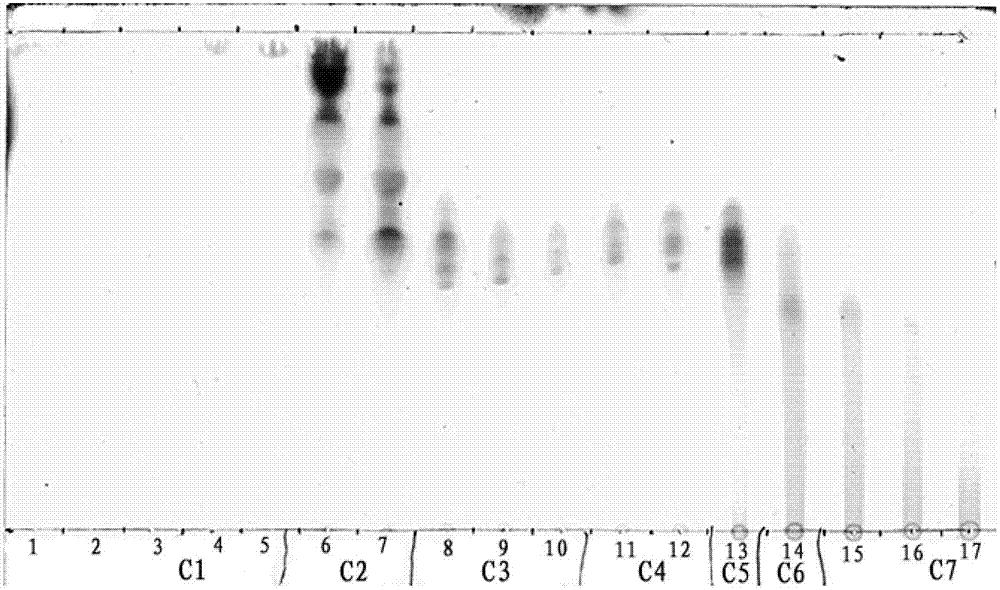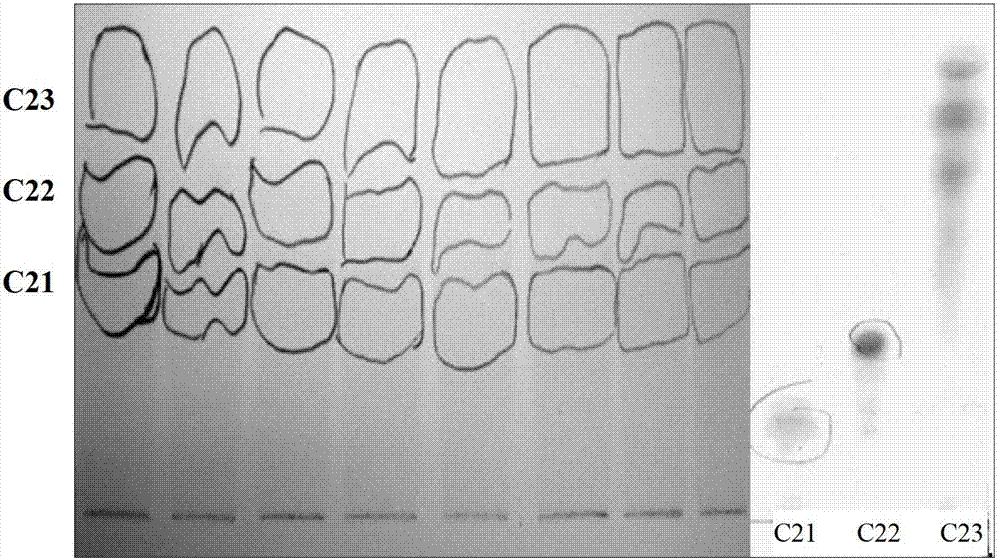Separation method for dermatophagoides farinae allergy resistant active substance in propolis
A technology of active substance and separation method, applied in the field of deep utilization of propolis, can solve the problems of cumbersome methods, inability to use indoors for a long time, high toxicity of lindane and not easy to degrade, etc., and achieves the effect of an efficient method system
- Summary
- Abstract
- Description
- Claims
- Application Information
AI Technical Summary
Problems solved by technology
Method used
Image
Examples
Embodiment 1
[0069] The establishment of embodiment 1 propolis extraction method system
[0070] 1 Materials and methods
[0071] 1.1 Materials
[0072] 1.1.1 Collection of materials
[0073] Since 2009, relying on Hubei Consinong Bee Products Co., Ltd., the experimenters have obtained propolis samples through direct contact with beekeepers and sampling themselves. The propolis is brown and agglomerated, and the bee species is Italian bee, and the environment where it is collected is mostly poplar and pine.
[0074] The collected samples were refrigerated at -20°C for several days, and when they were in a hard state, they were crushed into small pieces and stored in a 4°C refrigerator for later use.
[0075] Table 2-1 Characteristics of propolis samples from different regions in China
[0076]
[0077]
[0078] 1.1.2 Main instruments
[0079]
[0080] 1.1.3 Main reagents
[0081] Absolute ethanol, methanol, ethyl acetate, and chloroform, all of analytical grade, were purchas...
Embodiment 2
[0112] Example 2 The inhibitory activity of propolis extract to dust mite allergens
[0113] Currently, one of the most important allergens causing allergic diseases in the world is the dust mite (Dermatophagoides farinae). Dust mite, as the main inhalant allergen, can cause allergic diseases in all ages, especially in children. Therefore, how to effectively control dust mites has become a research hotspot of common concern in the medical and pesticide circles.
[0114] 1 Materials and methods
[0115] 1.1 Materials
[0116] 1.1.1 Insects tested
[0117] Dust mite (Dermatophagoides farinae), obtained from the Department of Phraseology and Institute of Tropical Medicine, College of Medicine, Yonsei University since 1999, was bred under laboratory conditions for multiple generations without any acaricide application.
[0118] 1.1.2 Main instruments
[0119] BIO-RAD No.422 electrophoresis tank, BIO-RAD No.041BR electrophoresis instrument, light incubator, high-speed centrifu...
Embodiment 3
[0155] Example 3 Separation and purification of propolis anti-dust mite allergen active substance
[0156] The diversity of biological activity of propolis has been accepted by more and more people, but due to the diversity of its origin and glue source plants, its biological activity is also different, and the material components that exert biological activity are not the same. At present, when researching various biological activities of propolis, it must be organically combined with the research of its active ingredients in order to be better applied to production practice.
[0157] 1 Materials and methods
[0158] 1.1 Materials
[0159] 1.1.1 Test samples
[0160] The 13 kinds of hair propolis samples were taken from the propolis paste obtained by the optimized process in the second chapter, numbered YP-1~YP-13 and placed in a 4°C refrigerator for use. According to the comparison of the inhibitory effect of each sample on the expression of the allergenic protein in the ...
PUM
 Login to View More
Login to View More Abstract
Description
Claims
Application Information
 Login to View More
Login to View More - R&D
- Intellectual Property
- Life Sciences
- Materials
- Tech Scout
- Unparalleled Data Quality
- Higher Quality Content
- 60% Fewer Hallucinations
Browse by: Latest US Patents, China's latest patents, Technical Efficacy Thesaurus, Application Domain, Technology Topic, Popular Technical Reports.
© 2025 PatSnap. All rights reserved.Legal|Privacy policy|Modern Slavery Act Transparency Statement|Sitemap|About US| Contact US: help@patsnap.com



